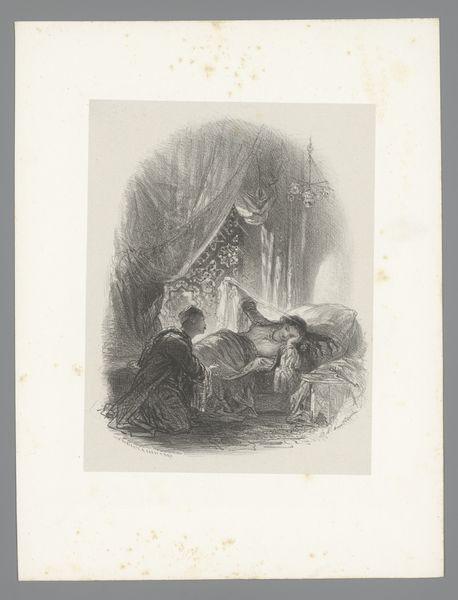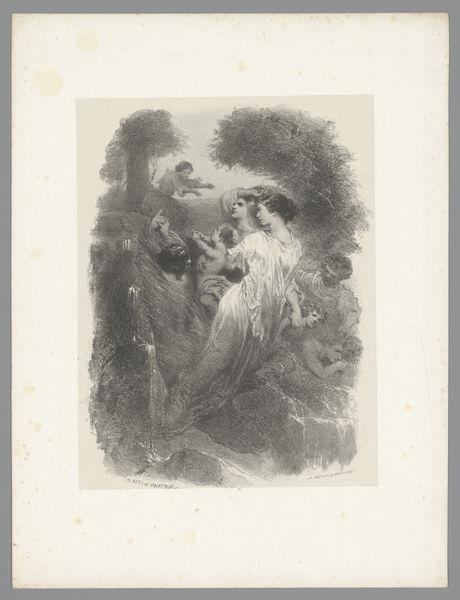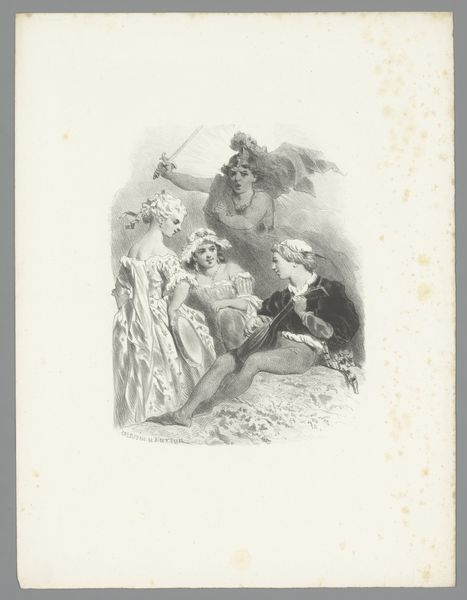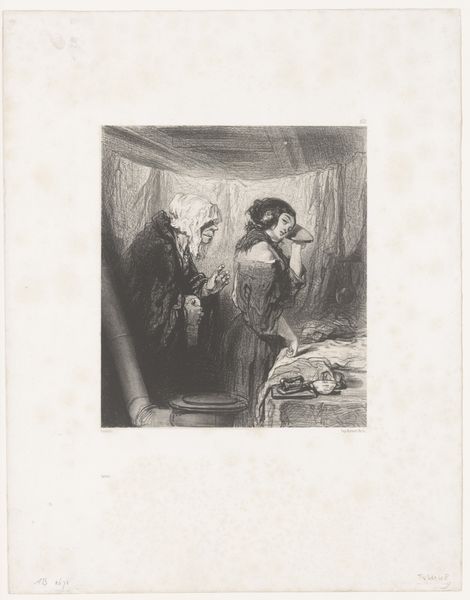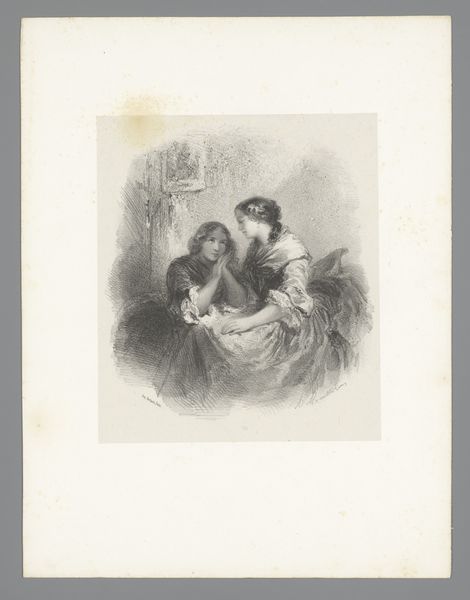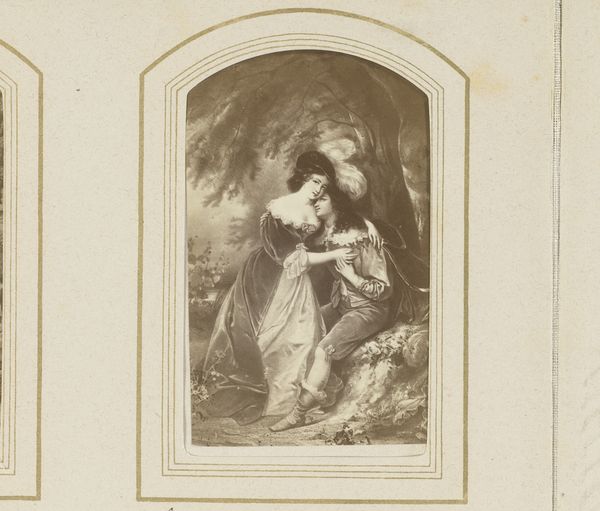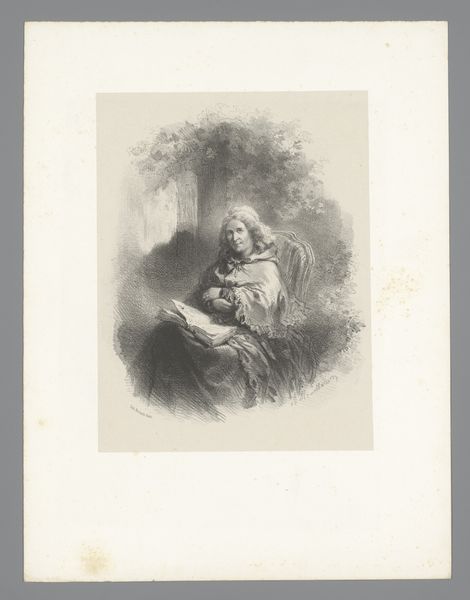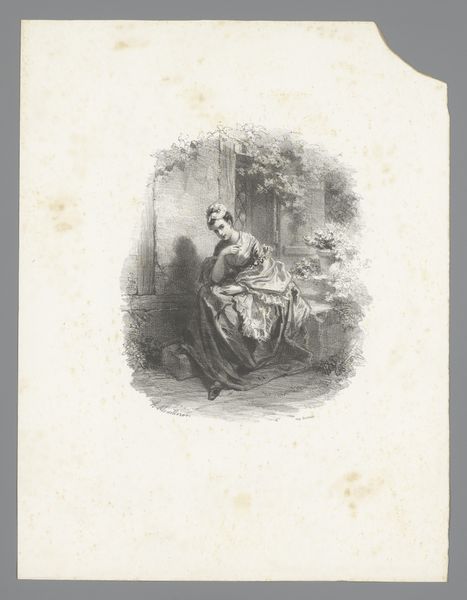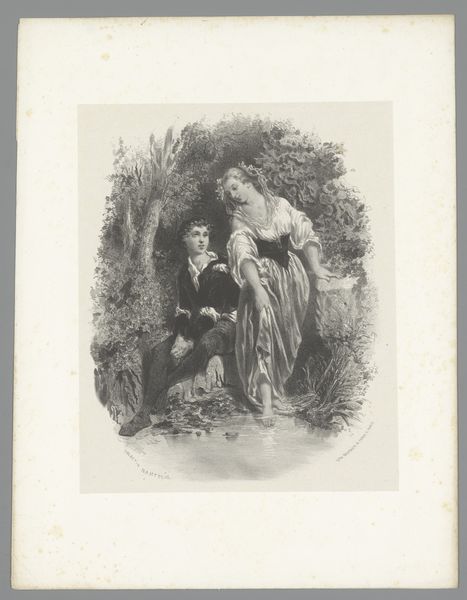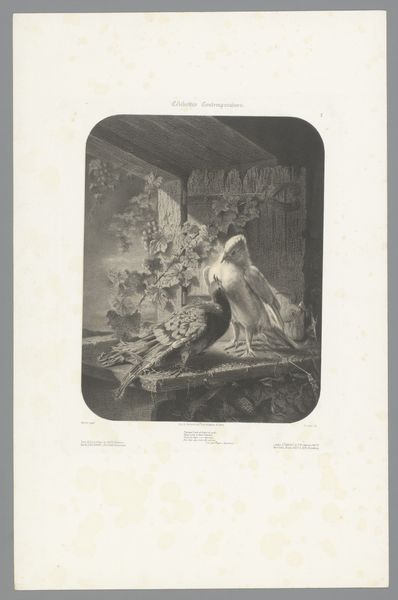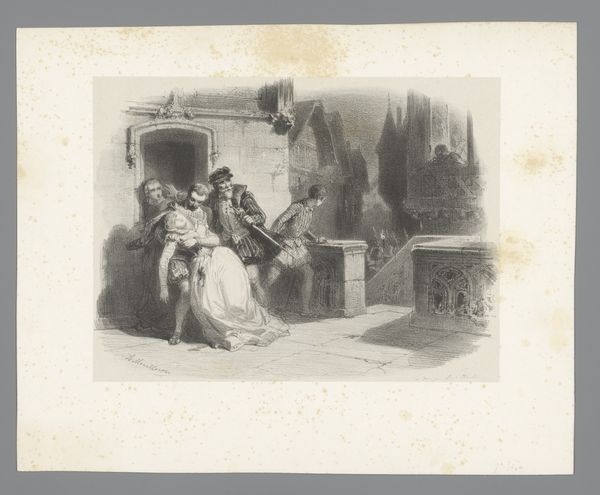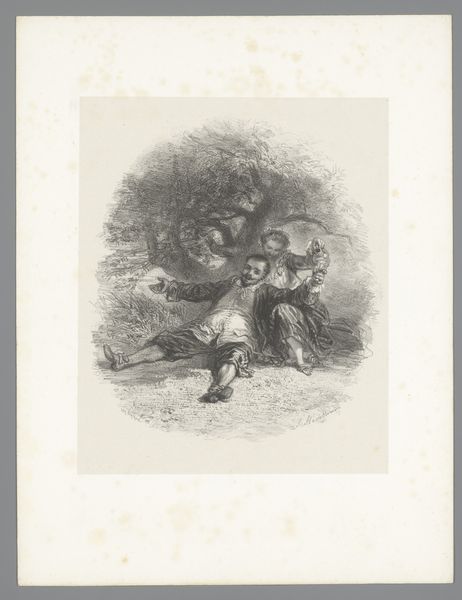
Valentina Visconti op een troon met twee jonge kinderen aan haar zijde 1830 - 1880
0:00
0:00
Dimensions: height 359 mm, width 273 mm
Copyright: Rijks Museum: Open Domain
Editor: So, this drawing, “Valentina Visconti on a throne with two young children at her side,” by Adolphe Mouilleron, dating from 1830 to 1880. It’s done on paper, very detailed, very… melancholy. I am struck by this kind of loneliness conveyed by a portrait of a queen on a throne. What can you tell me about it? Curator: Well, first, let's unpack that melancholy. You see Valentina, the Duchess of Orleans, surrounded by her children. This image participates in a Romantic vision of the past. But who was Valentina Visconti, and why this nostalgic, sentimental depiction? Editor: I confess I don’t know much about her. Curator: Valentina's life was marked by political maneuvering, accusations, and exile. Considering the historical context, the drawing becomes more than just a portrait. It speaks to female agency—or lack thereof—within patriarchal structures. The children become pawns. Doesn't that elaborate throne look like a cage? Editor: Yes! It does. So the drawing, created much later, uses her story to say something about women’s roles more generally? The drawing almost creates a story about historical powerlessness. Curator: Precisely! How do we represent figures from the past and what political work does that representation perform in the present? I wonder what we’re meant to take away from the image by how the artist chooses to depict this mother on her throne. Editor: I see that. It reframes what I initially perceived as simply a sentimental drawing, pushing it into more complicated historical questions. Curator: Exactly, we have to think about the choices involved in any representation! And what is emphasized, or left out, matters profoundly. Editor: I hadn't considered that before! Thank you!
Comments
No comments
Be the first to comment and join the conversation on the ultimate creative platform.
